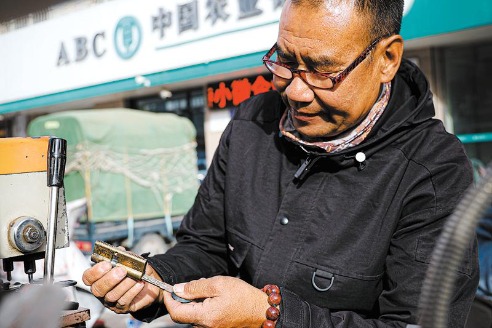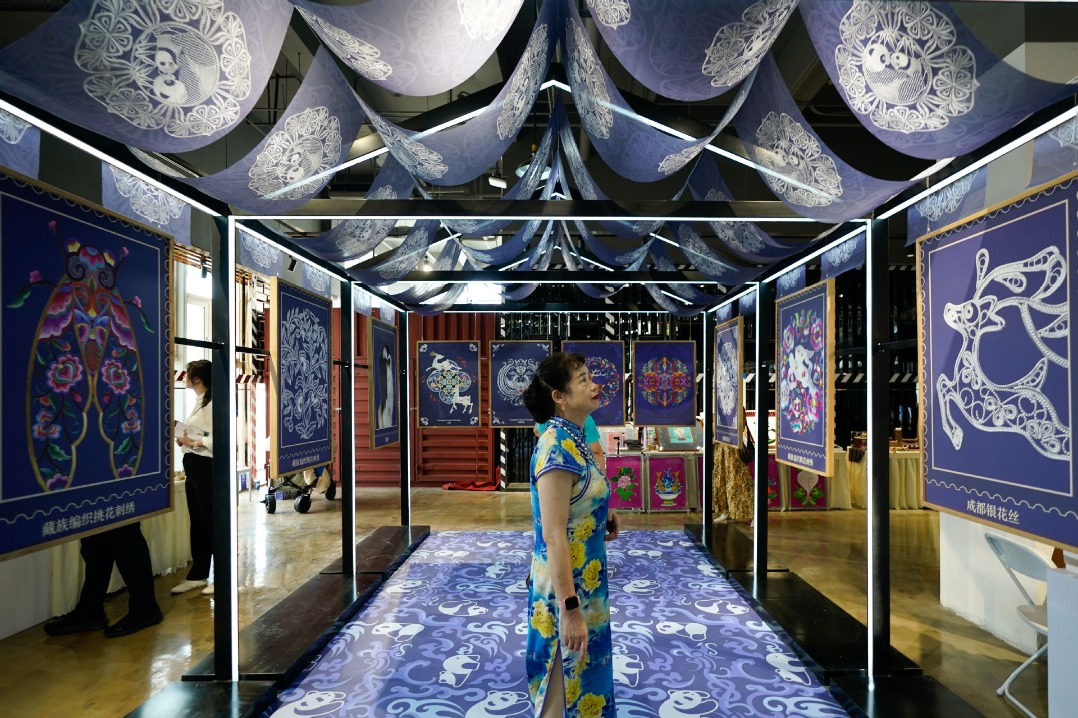Concerns raised over kids' addiction to card collecting

Seven-year-old Miaomiao is already an experienced card collector with three years of experience.
"I always felt very excited when I drew an SR(super rare) card or better," Miaomiao said, mentioning her grandmother's routine of buying her card packs on Tuesdays and Sundays from a neighborhood shop in Beijing's Shunyi district after dance lessons.
Her card collecting came to a stop when her mother stumbled upon a drawer filled with cards, many of them duplicates. Those cards, which were bought for over 1,000 yuan ($138.90), ended up being sold for just a few tens of yuan on the secondhand goods trading platform Xianyu for a quick sale.
The girl gracefully accepted her mother's decision, shifting her interest to other toys. Reflecting on her former favorite card series, Yeluoli — a Chinese animated figure — she now considers her past actions somewhat "stupid "because the figure was hyped by street vendors despite its simple appearance.
Miaomiao, among the minors embracing the heated card collecting trend, exemplifies a healthy passion amid growing concerns over some youths' potential shift from affection to addiction, prompting a call for concerted efforts from families, schools and regulatory oversight.
Collectible cards are generally themed and categorized into five grades — ultra rare, superior super rare, super rare, rare and normal, and they operate similarly to blind boxes.
Typically, a pack containing five undisclosed cards is priced at 10 yuan, although the cost can vary depending on the possibility of getting a "limited edition". The likelihood of acquiring an ultra rare card can be as low as 0.1 percent.
China's collectible card market surged from 2.8 billion yuan in 2019 to 26.3 billion yuan last year, overtaking the United States and Japan to claim the title of the world's largest collectible card market. It is projected to hit 44.6 billion yuan by 2029, according to a report released by GF Securities.
Pan Lan, a psychologist and head of the Yutong social work service center in Wuhan, Hubei province, labeled the popularity of collectible cards as "a successful marketing case", noting that it leverages the random reward mechanism of ripping card packaging open, triggering the release of dopamine to create a feeling of pleasure and potentially leading to physiological dependence. Additionally, it can foster a gambling mentality, with individuals believing in illusions such as the increased likelihood of "getting their desired card" because of previous unsuccessful trials.
"Actually, the seemingly trivial cards to us symbolize a 'circle culture' for children, facilitating their rapid integration into particular communities and acquisition of conversational capital through their rare cards. This process effectively satisfies their profound cravings for recognition and a sense of belonging," Pan said.
She pointed out that, unlike studying, card collecting provides a clear objective and can deliver instant gratification to children. This is especially significant for adolescents who are frustrated by schoolwork and seeking a sense of control.
She presented a clinical case involving a 12-year-old boy diagnosed with bipolar disorder. The boy spent tens of thousands of yuan on Star Wars-themed cards. As his condition progressed, he began experiencing symptoms such as insomnia when unable to obtain desired cards, as well as outbursts if his parents wouldn't give him money to buy more. Due to emotional difficulties, his school attendance was limited to once a week during that period.
While his parents attributed the cause of the illness to collectible cards, Pan considered it the result of multiple factors, underscoring a lack of family companionship in the boy's upbringing, which made him place more emphasis on peer relationships. With the family and school's neglect of the pressure brought about by increasing academic difficulty, the boy sought affirmation from his classmates through an easier way of showcasing rare cards and gradually lost control.
Luo Xueming, a senior expert at the Guangdong Modern Urban Industrial Technology Research Institute, said that collecting cards itself is not problematic.
He hailed the cultural symbols carried by high-quality cards, which feature classic literary characters, historical figures and traditional sports, as they facilitate cultural inheritance in a lighthearted manner.
However, some business owners exploit the vulnerability of young people's discernment by designing addictive mechanisms that prioritize short-term profits over the consumer's well-being. When collecting cards becomes the focus of their mentality and everyday life, opportunities for diverse development such as learning exploration and social interaction in reality will be deprived, Luo said.
He highlighted a convention introduced in late 2021 by Zhejiang Kayou Animation, China's largest collectible card market shareholder. It has set specific regulations concerning purchase limits for minors and the duration of their shopping visits to its outlets, demonstrating a sustainable trading approach.
Considering the similar operational mode of collectible cards and blind boxes, Zhu Wei, deputy head of the Communication Law Research Center at the China University of Political Science and Law, proposed that the oversight of collectible cards could align with the guidelines for business practices of blind box operations issued by the State Administration for Market Regulation in 2023.
These guidelines mandate the disclosure of prices and drawing probabilities, prohibit false advertising and consumer inducement, and encourage the establishment of a guaranteed mechanism.
Zhu emphasized the prohibition of card purchases for children under age 8, particularly highlighting the need to enhance purchasing verification procedures in online livestreaming rooms.
limenghan@chinadaily.com.cn





































